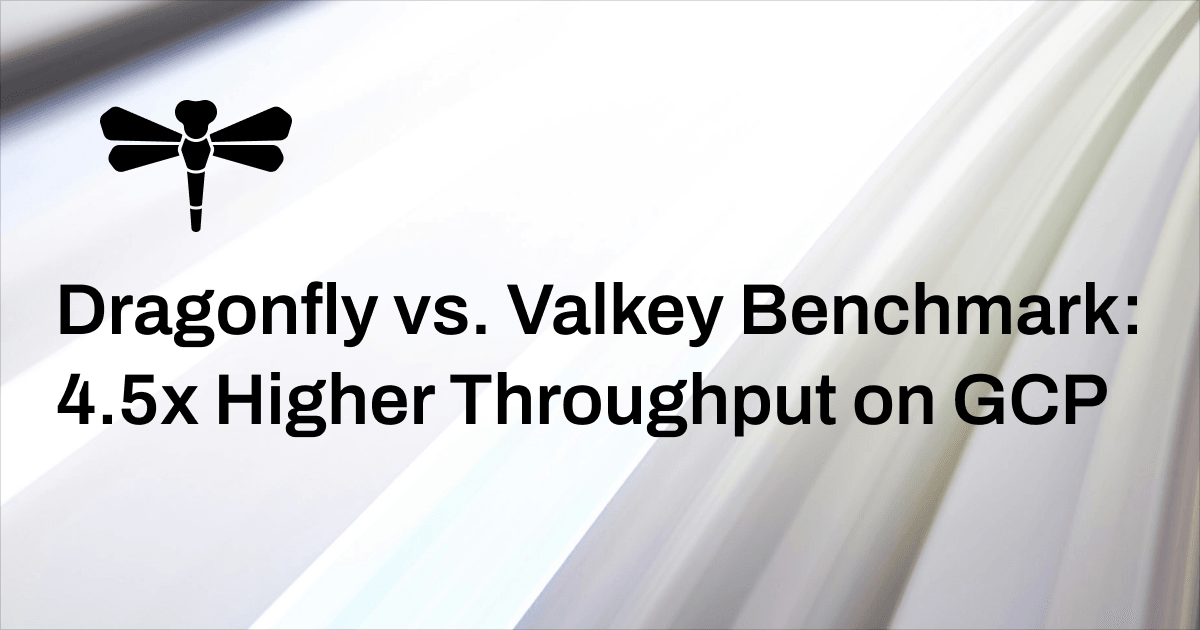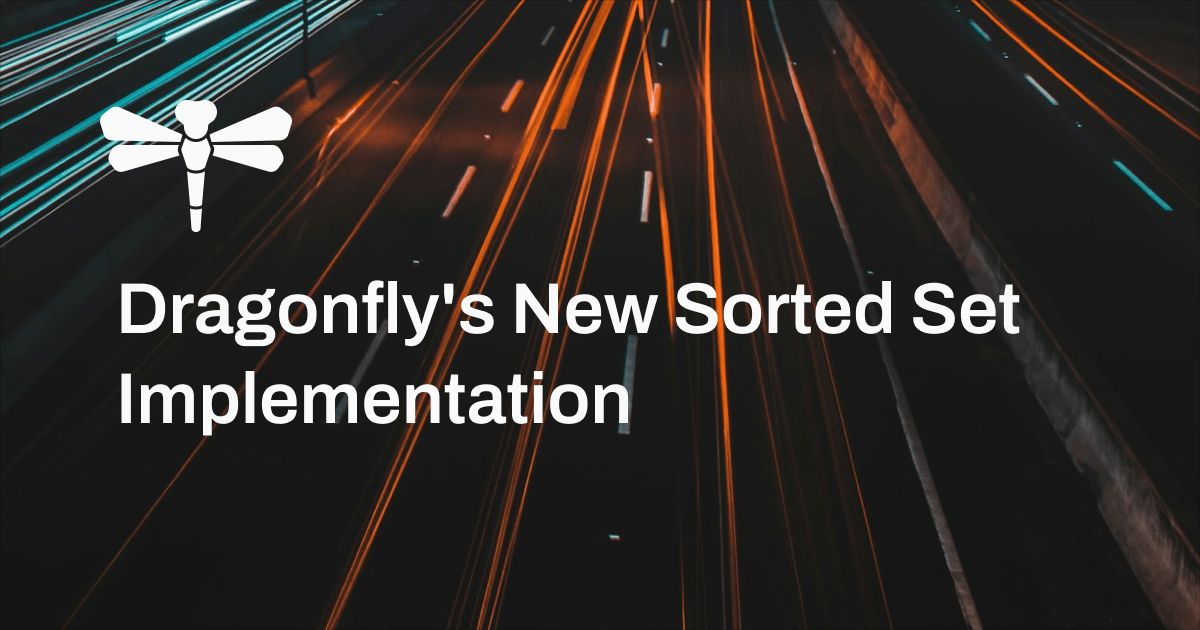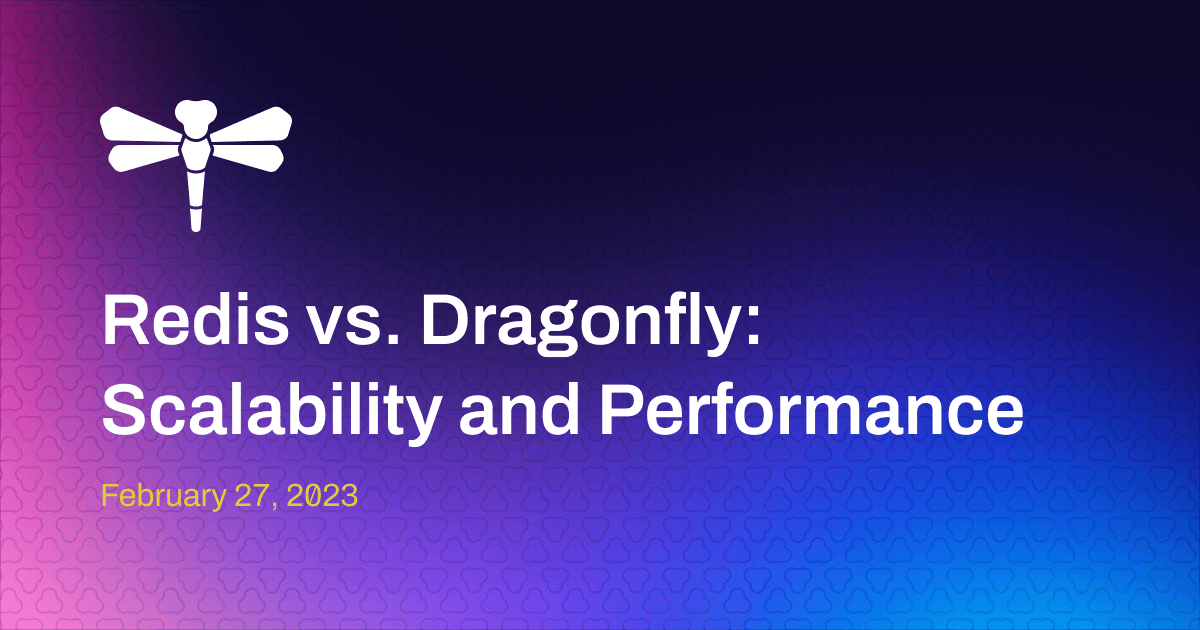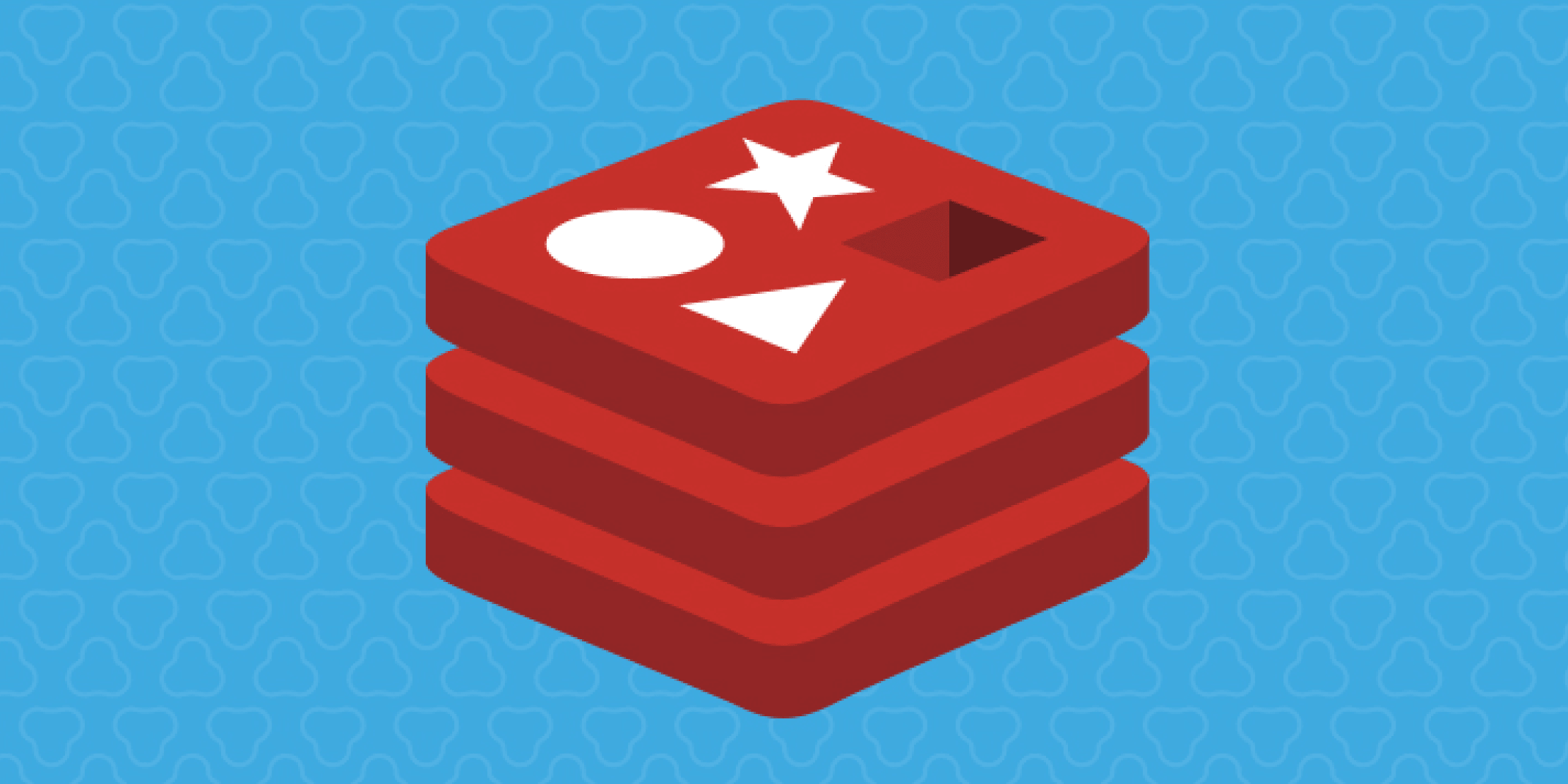engineering posts

Live Migration from AWS ElastiCache to Dragonfly Cloud: A Hands-on Demo
Discover a zero-downtime migration strategy from AWS ElastiCache to Dragonfly Cloud while maintaining data consistency.

Supercharge Your Applications with Dragonfly Cloud on GCP
Boost application performance with Dragonfly Cloud with sub-millisecond latency, now on Google Cloud Marketplace. Deploy directly within your GCP account today!

Automating Dragonfly Cloud Private Networks with Terraform
Learn how to configure private networks for Dragonfly Cloud data stores using Terraform—improving security, lowering latency, and optimizing costs.

The Future of Modern Data Infrastructure
Explore key predictions shaping modern data infrastructure. Discover what’s next for future-ready infrastructure and stay ahead in data innovation.

Provisioning a Large Cache on AWS with Dragonfly Cloud and Terraform
Learn how to provision a 200GB cache on AWS with the Dragonfly Cloud Terraform Provider, which is perfect for high-performance cloud-native apps.

Dragonfly vs. Valkey Benchmark: 4.5x Higher Throughput on Google Cloud
Dragonfly outperforms Valkey in throughput, performance stability, and memory efficiency, scaling linearly with CPU cores and excelling in high-concurrency, CPU-intensive workloads.

Crypto News Aggregation with Dragonfly: A High-Performance Solution for Traders and Developers - Part 2
Let's continue our journey of building a high-performance crypto news aggregation system utilizing Dragonfly’s vector search capabilities.

Crypto News Aggregation with Dragonfly: A High-Performance Solution for Traders and Developers - Part 1
Learn how to build a high-performance crypto news aggregation system using Dragonfly’s JSON and SEARCH APIs for traders and developers.

Modern Distributed Database Architectures - Part 2
Explore distributed database architectures and their tradeoffs, highlighting trends in scalability, consistency, and cloud-native design.

Multiplayer State Management with Unity and Dragonfly Cloud
Integrate Unity with Dragonfly Cloud. Transform your local game into a real-time online multiplayer experience effortlessly.

Modern Distributed Database Architectures - Part 1
Discover the tradeoffs of modern distributed database architectures. Learn how they shape performance, consistency, and fault tolerance.

High Availability in Cloud-Based In-Memory Data Stores
Learn how Dragonfly Cloud ensures high availability with replica configurations, robust failover mechanisms, and performance-focused architecture, delivering continuous uptime for cloud-based in-memory data stores.

Linux Memory Overcommit Modes Explained
Understand Linux memory overcommit modes and why Dragonfly recommends overcommit=1 for control, efficiency, and reliability. This is just one example of the critical details our experts handle using the same Dragonfly core for our cloud offering, so you don't have...

Why is Your In-Memory Data Store Bill so High?
Discover the most common causes of rising Redis/Valkey costs, including over-provisioning, pricing model misalignment, and cluster inefficiencies, along with strategies to address these issues.

Dragonfly Cloud Transport Layer Security
Learn how Dragonfly Cloud secures data in transit with TLS, ensuring reliable, automated encryption for resilient cloud data store communications.

Pulling the Curtain Back on AWS's Price Cut for ElastiCache
Explore AWS's recent price cut for ElastiCache and why it doesn't address the underlying scaling and performance issues, plus why Dragonfly offers a more efficient alternative.

Avoiding Common Mistakes & Pitfalls When Scaling Redis
Learn more about the four most common mistakes developers make when scaling Redis and how to avoid them.

Managed Offerings of Data Infrastructure
Let's discuss various managed offerings for data infrastructure, including dedicated, multi-tenancy, BYOC, and serverless, and learn why Dragonfly chose the dedicated model as our first offering.

Bitmaps in Dragonfly: Compact Data with Powerful Analytics
Learn how to use Bitmaps for efficient data handling in Dragonfly. Explore key commands, master bit-level operations, and dive into real-world use cases like user retention and feature flags.

How We Use Control Loops to Manage Dragonfly Cloud Datastores
Learn how we build control loops to simplify datastore management across multi-cloud environments.

Cluster Scalability: Redis Gossip vs. Dragonfly Orchestration
Explore the architectural differences between Redis Cluster and Dragonfly Cluster, comparing gossip-based and control plane orchestrated designs to understand how each scales in distributed systems.

Why Does Dragonfly Require Only Half the Infrastructure of Redis?
Dragonfly's innovative architecture, data structures, and advanced features can significantly reduce infrastructure needs, delivering substantial cost savings.

Multi-Tenancy in Dragonfly: Isolated Data, Unified Performance
The multi-tenancy feature enables isolated data stores for multiple applications, ensuring the same performance without key collisions.

Dragonfly SSD Data Tiering: Caching All the Way Down
Dragonfly SSD tiering offers a new level of efficiency for managing data by intelligently moving less-used data to SSD storage while keeping hot data in memory.

Scaling Heavy BullMQ Workloads with Dragonfly Cloud
Learn how to efficiently scale BullMQ workloads using Dragonfly Cloud's managed services. Discover setup tips, optimization configuration options, and real-world performance insights.

Dragonfly Cloud is Enterprise Ready
Dragonfly Cloud is now enterprise-ready with SOC 2 compliance, RBAC, and ACL features, ensuring top-notch security and scalability for modern cloud workloads.

Top 10 Modern Data Infrastructure Companies in 2024 - Part 2
Uncover the second half of our top 10 modern data infrastructure companies for 2024, highlighting groundbreaking technologies in real-time processing, analytics, and search solutions.

A Preview of Dragonfly Cluster
Dragonfly pushes vertical scalability to its limits. But when that's not enough for your workloads, discover the powerful horizontal scalability of Dragonfly Cluster!

Top 10 Modern Data Infrastructure Companies in 2024 - Part 1
Unveil the first half of our top 10 modern data infrastructure companies for 2024, showcasing cutting-edge advancements in scalability, speed, caching, and real-time analytics.

Win Tickets to AWS re:Invent and KubeCon North America
Don't miss your chance to be where the tech world converges. Join our community today and stand a chance to win!

Principles of Modern Data Infrastructure
Discover the key principles of modern data infrastructure—what we believe are necessary to handle today's demanding data requirements.

Dragonfly: The Future-Proof Alternative to Redis
Dragonfly is the future-proof alternative to Redis, offering superior performance, cost efficiency, and a forward-thinking licensing strategy.

Migrating to Dragonfly Cloud using RedisShake
Learn how to migrate to Dragonfly Cloud using RedisShake, a versatile tool for seamless and efficient in-memory data migration.

Introducing: Dragonfly Cloud
Dragonfly Cloud is now available! Get the most performant and cost-efficient in-memory data store in the world up and running in minutes.

Building an Interactive Terminal Application with Go & Dragonfly
Learn to build an interactive terminal UI application using Go, BubbleTea, and Dragonfly. Check out our first guest author blog post!

Best Practices for Managing In-Memory Data Stores
Let's talk about best practices for snapshots, backups, high availability, scalability, and security to ensure reliable in-memory data infrastructure.

Dragonfly Cloud vs. AWS ElastiCache: Product Breakdown
Compare the differences between Dragonfly Cloud and AWS ElastiCache, focusing on pricing, performance, scalability, and unique features to optimize your in-memory data store needs.

Rueidis with Dragonfly: Auto-Pipelining & Client-Side Caching
Explore how our new integration with Rueidis enables auto-pipelining, client-side caching, and distributed locking for Go applications.

Batch Operations in Dragonfly: Pipelining, Transactions, and Lua Scripting
Explore advanced batch operations in Dragonfly, including pipelining, transactions, and Lua scripting, to enhance performance and data handling in high-throughput applications.

Running DocsGPT with Dragonfly: Adding AI to Your Documentation
Learn how to integrate DocsGPT with Dragonfly for efficient documentation queries, and see how AI enhances your project documentation.

Mastering In-Memory Data Costs
Discover how to optimize costs for in-memory data stores like Redis and Dragonfly, focusing on best practices for cloud cost management and FinOps strategies. Learn practical tips for cost efficiency.

Redis Interview Questions for DevOps and Platform Engineers
Prepare for your next DevOps or Platform engineering interview. Let's learn and discuss best practices for managing high-performance, reliable Redis systems.

Dragonfly and Celery: Powering Financial Transactions
Learn how Dragonfly and Celery seamlessly integrate to build a financial transaction system based on Ethereum, providing a robust solution for efficient, high-volume data processing.

Efficient Context Management in LangChain Chatbots with Dragonfly
Explore efficient context management for LangChain OpenAI chatbots with Dragonfly, enhancing performance and user experience through caching techniques.

Using Bloom Filters with Dragonfly
Discover Dragonfly’s new native Bloom filter support, providing yet another powerful tool to enhance caching, data management, and system efficiency.

Ensuring Atomicity: A Tale of Dragonfly Transactions
Dive into Dragonfly's transactional framework through a metaphorical journey, uncovering how it maintains atomicity and serializability in a kingdom of data.

Redis and Dragonfly Architecture Comparison
This blog post provides a comparison of Redis and Dragonfly architectures, highlighting Dragonfly's advanced solutions for overcoming Redis's limitations in performance, scalability, and memory efficiency.

Dragonfly's New Sorted Set Implementation
This blog post dives into Dragonfly's innovative approach to enhancing the sorted set data type, showcasing a new B+ tree implementation that significantly reduces memory usage by up to 40% and improves performance.

Using Dragonfly as a Table Engine for ClickHouse
In this blog post, we evaluate using Dragonfly as a ClickHouse table engine, highlighting the seamless integration and exploring both benefits and practical considerations.

Relay with Dragonfly: Towards the Next-Gen Caching Infrastructure
Integrating Dragonfly with Relay enhances PHP applications by significantly boosting caching performance, showcasing scalability, high throughput, and reduced latency for efficient next-gen caching infrastructure.

Measuring Cardinality in the Millions and Billions with Dragonfly
This blog post explores using Dragonfly for measuring cardinality with precision at massive scales. Focusing on `Set` for exact counts and `HyperLogLog` for accurate estimations.

Scaling Redis without Clustering
This blog explores scaling Redis, highlighting the complexities of Redis Cluster and presenting Dragonfly as a simpler, efficient alternative. It offers insights into vertical scaling, operational ease, and Dragonfly's ability to handle large-scale workloads on a single node.

Running and Optimizing Sidekiq Workloads with Dragonfly
In this blog post, we dive into the journey of running and optimizing Sidekiq workloads with Dragonfly, demonstrating Dragonfly's compatibility and efficiency. This initiative also illustrates our dedication to growing and adapting Dragonfly within the open-source community.

2024 New Year, New Number: New Benchmarks Show Dragonfly Achieves 6.43 Million Ops/Sec on an AWS Graviton3E Instance
With the advancements of cutting-edge hardware, Dragonfly reaches 6.43 million ops/sec on a single `c7gn.16xlarge` instance.

Scaling Real-Time Leaderboards with Dragonfly
Explore how to build dynamic, real-time leaderboards using Dragonfly and PostgreSQL. Learn to effectively manage user scores and data for high-performance, scalable leaderboard systems for gamification features.

Using Laravel with Dragonfly
Learn how to leverage Dragonfly to boost the performance and scalability of your Laravel applications. This blog post dives into using Dragonfly as a cache and queue driver for Laravel, exploring its compatibility, low memory usage, efficient snapshotting, and advanced...

What You Need to Know About ElastiCache Serverless
In the blog post, the emerging trend of serverless solutions is discussed, focusing on AWS ElastiCache Serverless. While acknowledging its innovative approach, our calculation suggests that the pricing model may not be practical for medium to large workloads.

Announcing Dragonfly Search
We are thrilled to announce Dragonfly Search, enabling both vector search and faceted search in our robust and performant in-memory data store.

How We Optimized Dragonfly to Get 30x Throughput with BullMQ
In this blog post, we navigate the journey of optimizing Dragonfly for BullMQ, achieving an exceptional 30x throughput increase. This endeavor highlights our deep commitment to the community and demonstrates our dedication to expanding and adapting Dragonfly to the open-source...

Building E-Commerce Applications with Dragonfly
In this blog post, we discover how Dragonfly boosts e-commerce platforms with efficient caching, personalized content, and managing high-traffic events. Learn about Dragonfly's capabilities for ensuring smooth operations during peak times.

Running BullMQ with Dragonfly
In this post, we explore the integration of Dragonfly as a drop-in replacement for Redis as the backing in-memory store of BullMQ, a robust background job processing library for Node.js.

Developing with Dragonfly: Solve Caching Problems
In the Developing with Dragonfly series of blog posts, we will explore different techniques and best practices for developing applications with Dragonfly. In this blog post, we explore the 3 common caching problems and best practices to mitigate them.

Developing with Dragonfly: Cache-Aside
In the Developing with Dragonfly series of blog posts, we will explore different techniques and best practices for developing applications with Dragonfly. We start with one of the most common usages: Cache-Aside.

Fearlessly Handling BigKeys with Dragonfly
Wrestling with BigKeys is hardly an issue when using Dragonfly, the groundbreaking in-memory data store. You can use BigKeys in Dragonfly if they are necessary to your server applications, fearlessly.

The Unbearable Lightness of Horizontal Scaling
This post explores the limitations of horizontal scaling in terms of cluster reliability, load distribution, and cloud over-commitment. It also outlines design decisions that were made to allow Dragonfly, a drop-in Redis replacement, to scale vertically in order to handle...

Monitoring In-memory datastores
This blog post covers monitoring in-memory datastores, focusing on Dragonfly. Learn how to use Prometheus and Grafana to monitor Dragonfly metrics and visualize them on a dashboard. Explore memory consumption, client-side metrics, server metrics and more.

Leveraging the power of Lua scripting with Dragonfly
This post explores how Dragonfly improves the Lua scripting experience by solving common issues and introducing new interesting features

We’re Ready for You Now: Dragonfly In-Memory DB Now Supports Replication for High Availability
Dragonfly, an in-memory database that can be a drop-in Redis replacement, now supports replication for high availability in its version 1.0 release.

Rate Limiting with Dragonfly
Rate Limiters are used in software development to regulate the rate of executing actions or accessing resources.

Building a Background Processing Pipeline with Dragonfly
In this blog post, you will learn how to use Redis Lists to build a background processing pipeline with Dragonfly.

Top 5 Reasons Why Your Redis Instance Might Fail
In this article, we will explain the main reasons why your Redis instance might fail, and provide advice to avoid this.

Redis vs. Dragonfly Scalability and Performance
A thorough benchmark comparison of throughput, latency, and memory utilization between Redis and Dragonfly.

Balanced vs Unbalanced
Balance is essential in life. When our focus is limited to improving a single aspect of our life, we weaken the whole system.

Dragonfly Cache Design
The design behind Dragonfly cache

Redis Analysis - Part 2: Simplicity
What simplicity means to you as a datastore user?

Redis Analysis - Part 1: Threading model
Single-threaded vs Multi-threaded
Switch & save up to 80%
Dragonfly is fully compatible with the Redis ecosystem and requires no code changes to implement. Instantly experience up to a 25X boost in performance and 80% reduction in cost